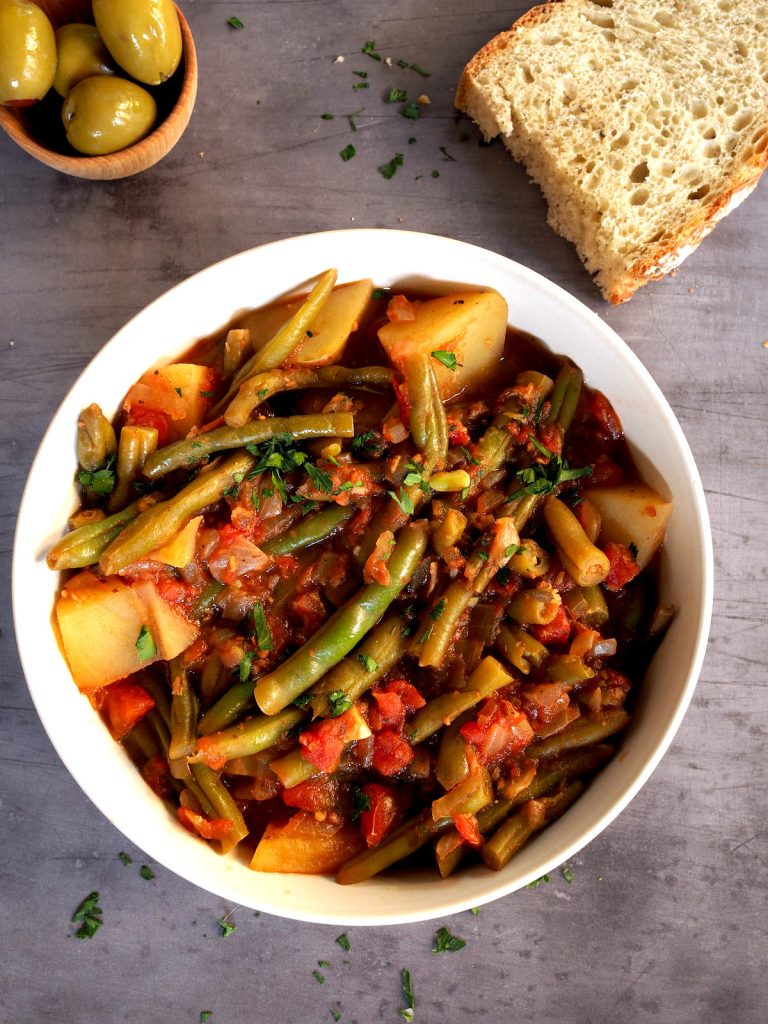Baked Omelet: Easy, Nutritious, and Delicious Recipes
A baked omelet is an oven-cooked version of the traditional omelet. Instead of frying on a stovetop, you bake the mixture in an oven-safe dish. This method creates a fluffy, evenly cooked dish. Ingredients like veggies, meats, cheese, and herbs blend seamlessly, creating a cohesive flavor. Baked omelets often serve more people at once, making them ideal for family breakfasts or brunch gatherings.
Origin and Cultural Significance
Omelets are believed to have originated in ancient Persia, where people combined eggs with various ingredients. Over centuries, the concept spread and evolved across cultures. In France, the term “omelette” emerged, representing a refined culinary tradition. The baked version adapts this customizable dish into a convenient, modern form, maintaining its cultural versatility. Globally, baked omelets showcase regional flavors, from Mediterranean ingredients to spicy Mexican variations.
Ingredients and Variations
Essential Ingredients for a Basic Baked Omelet
A basic baked omelet requires several essential ingredients.
- Eggs: Use six large eggs for a standard-size dish.
- Milk or Cream: Add 1/2 cup of milk or cream for a fluffy texture.
- Salt: Include 1/2 teaspoon of salt for seasoning.
- Pepper: Use 1/4 teaspoon of black pepper to enhance flavor.
- Butter or Oil: Grease the baking dish with 1 tablespoon of butter or oil to prevent sticking.
These key components create a foundation for your baked omelet. Adjust quantities for larger servings if more people need to be served.
Popular Variations and Add-Ins
Popular variations and add-ins transform a basic baked omelet into a gourmet dish.
- Vegetables: Add bell peppers, spinach, onions, or tomatoes for a nutritious boost. For example, diced bell peppers and spinach add color and nutrients.
- Meats: Incorporate cooked sausage, bacon, or ham for a protein-rich option. Crumbled sausage and diced ham provide a savory element.
- Cheese: Use cheddar, mozzarella, or feta to enhance flavor. Shredded cheddar and crumbled feta create a creamy texture.
- Herbs: Add fresh parsley, chives, or basil for aromatic flavors. Chopped chives and basil infuse the dish with freshness.
- Spices: Consider paprika, garlic powder, or cumin for a unique twist. A dash of paprika adds a smoky note.
These variations offer endless possibilities, allowing you to customize your baked omelet to suit taste preferences. Mix and match to create your ideal combination.
Preparing a Baked Omelet
Step-by-Step Guide
- Preheat the Oven: Set your oven to 375°F (190°C) to ensure even cooking from the start.
- Prepare Ingredients: Crack 8 large eggs into a mixing bowl. Add 1/2 cup of milk, 1 teaspoon of salt, and 1/2 teaspoon of black pepper. Whisk until well blended.
- Grease the Baking Dish: Use butter or oil to grease a 9×13-inch baking dish, ensuring the omelet doesn’t stick.
- Add Fillings: Pour the egg mixture into the dish. Evenly distribute 1 cup of shredded cheese, 1 cup of diced vegetables (like bell peppers, spinach, or onions), and 1 cup of cooked meat (such as bacon or ham) if desired.
- Bake: Place the dish in the preheated oven. Bake for 25-30 minutes or until the eggs are set and the top is slightly golden.
- Cool and Serve: Let the baked omelet cool for 5 minutes before cutting and serving. This helps it set and makes slicing easier.
- Whisking Thoroughly: Ensures the eggs mix well with the milk, resulting in a fluffier omelet.
- Using Fresh Ingredients: Fresh vegetables, meats, and herbs enhance overall flavor and texture.
- Evenly Distributing Fillings: Helps prevent dense spots and promotes even cooking.
- Avoiding Overbaking: Check the dish at 25 minutes to prevent dryness. A slight jiggle in the center indicates doneness post-resting.
- Incorporating Cheese Gradually: Add cheese in layers to avoid clumping and ensure even melting.
Nutritional Benefits
Health Benefits of Key Ingredients
Baked omelets offer a nutritious boost thanks to their diverse ingredients. Eggs, the main component, contain high-quality protein, vitamins D, B6, and B12, selenium, and riboflavin. These nutrients support muscle strength, immunity, and overall energy levels.
Vegetables like bell peppers, spinach, and tomatoes add fiber, vitamins A, C, K, and antioxidants. These elements improve digestion, support vision, and protect cells from damage. Cheese, often used in baked omelets, provides calcium and vitamin D, essential for bone health.
Meats such as ham or turkey sausage add protein and iron, which aid muscle maintenance and oxygen transport in the blood. Including herbs and spices like parsley and black pepper can enhance flavor without extra calories or sodium, benefiting cardiovascular health.
Dietary Considerations: Low Carb and High Protein
Baked omelets align well with low-carb diets due to their minimal carbohydrate content. Each serving typically contains less than 5 grams of carbs, making it suitable for ketogenic and other low-carb regimens. This characteristic can help manage blood sugar levels and promote weight loss.
High protein content is another plus, with each egg providing about 6 grams of protein. This makes baked omelets an excellent choice for a high-protein diet, supporting muscle repair and growth, and keeping you satiated for longer periods. By customizing fillings, you can tailor a baked omelet to fit dietary needs, whether prioritizing low-carb or high-protein intake.
Create a balanced meal by choosing nutrient-dense ingredients and moderating portions. While enjoying baked omelets, you contribute significantly to your daily nutritional requirements, easily aligning with health and dietary goals.
Recommended Tools and Equipment
Must-Have Kitchen Tools for Baking Omelets
To bake omelets successfully, having the right kitchen tools ensures convenience and efficiency. Essential tools include:
- Mixing Bowl: Use a large mixing bowl to whisk eggs and combine ingredients easily.
- Whisk: A sturdy whisk helps achieve a smooth, airy mixture for fluffier omelets.
- Cutting Board and Knife: These tools are necessary for chopping vegetables, meats, and herbs precisely.
- Oven-safe Baking Dish: An 8×8 inch, or similar size, baking dish ensures even cooking and perfect omelet thickness.
- Measuring Cups and Spoons: These provide accurate ingredient ratios, critical for recipe success.
- Spatula: A heat-resistant spatula assists in serving the baked omelet without breaking.
- Food Processor: For quick dicing or shredding of ingredients, a food processor saves time and effort.
- Hand Mixer: Ideal for thoroughly mixing eggs and other ingredients, achieving a consistent batter.
- Herb Scissors: These make chopping fresh herbs easier and quicker.
- Silicone Baking Mat: Lining your baking dish with a silicone mat ensures easy cleanup and prevents sticking.
- Digital Thermometer: Checking the internal temperature with precision prevents overcooking or undercooking your omelet.
Serving Suggestions
Ideal Side Dishes
Pair baked omelets with fresh side dishes to enhance the overall meal. For instance, mixed green salad adds a refreshing crunch, balancing the omelet’s richness. Roasted potatoes or sweet potato hash provide a hearty complement, making the dish more filling. Sautéed mushrooms or grilled asparagus offer earthy tones that contrast well with a cheesy omelet. For a lighter option, fresh fruit salad with seasonal fruits like berries, melons, and grapes works excellently.
Presentation Tips for Special Occasions
For special events, style your baked omelet to impress. Garnish with fresh herbs like parsley, chives, or dill for a pop of color and flavor. Cut the omelet into neat squares or wedges for a clean, professional look. Use colorful platters to make the dish visually appealing. Add a dollop of sour cream or a drizzle of hollandaise sauce for extra flair. Arrange side dishes in small serving bowls around the omelet to create an inviting display. Pair the meal with a well-presented beverage like freshly squeezed juice or a mimosa for added sophistication.
Conclusion
Baked omelets are a versatile and nutritious option that can easily fit into your busy lifestyle. With their customizable ingredients and straightforward preparation, they offer a delicious way to enjoy a balanced meal. Whether you’re catering to dietary needs or simply looking for a convenient breakfast or brunch dish, baked omelets have you covered. Equip your kitchen with the right tools and pair your omelet with complementary sides to create a meal that’s both satisfying and visually appealing. Embrace the simplicity and flavor of baked omelets and elevate your culinary experience.






